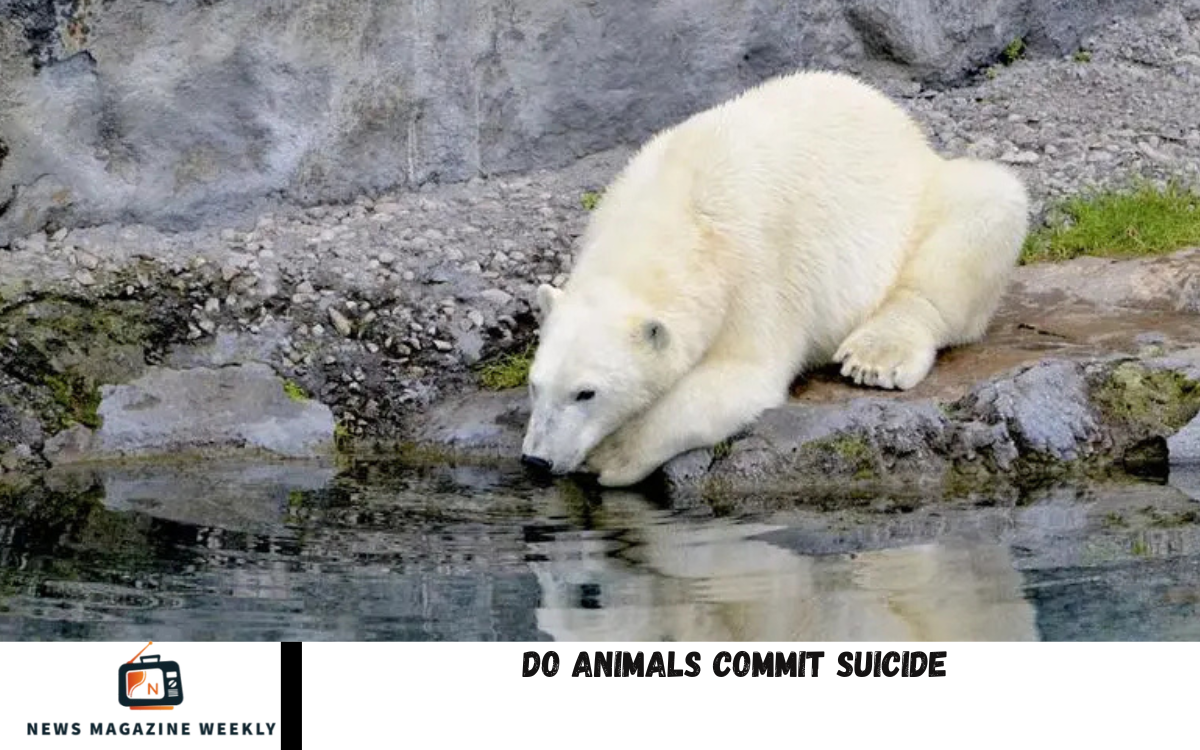The question of whether animals commit suicide has intrigued scientists, animal lovers, and philosophers alike. While the concept of suicide in humans is often tied to complex emotions, mental health issues, or life circumstances, it’s essential to consider whether animals experience such a thing in the same way. In the animal kingdom, behaviors that might seem like suicide, such as self-destructive actions or ceasing to eat, are often linked to stress, illness, or environmental factors rather than a conscious desire to end their lives.
Some animals exhibit behaviors that resemble suicide during extreme situations like captivity, isolation, or severe emotional distress. Dolphins and elephants, known for their high intelligence and social bonds, have been observed engaging in strange or risky behaviors when removed from their natural environments or when faced with trauma.
The idea of animal suicide is still a subject of debate. While animals may exhibit behaviors that seem self-destructive, it’s crucial to approach these cases with an understanding of animal psychology and the various factors influencing their actions.
Are Animals Capable of Self-Destructive Behavior?
Yes, animals are capable of self-destructive behavior. It’s essential to understand that this behavior is typically driven by instinct, stress, or external factors rather than a conscious desire to end their lives. In the wild and captivity, animals sometimes engage in actions that appear harmful or destructive to themselves. However, these actions are usually responses to environmental changes, trauma, or psychological stress rather than the result of complex emotional states like depression or suicidal thoughts, which humans experience.
Dolphins, elephants, and even some primates have been observed in captivity engaging in behaviors that can harm them, such as excessive self-biting, hair-pulling, or not eating. This often happens when they are isolated, bored, or under significant stress. Similarly, some species of animals may act aggressively or put themselves in dangerous situations as a survival instinct. Still, these behaviors are typically driven by external pressures rather than an intentional desire for self-harm.
Animals also exhibit risky behaviors, such as fighting or facing predators, which could result in injury or death. Still, these actions are motivated by survival needs or social structure, not self-destruction. Ultimately, while animals can show signs of distress or engage in harmful behaviors, these actions are generally responses to their circumstances and not a reflection of a conscious, suicidal intent.
The Role of Stress and Trauma in Animal Behavior
Stress and trauma play significant roles in shaping animal behavior, often leading to changes in their actions, health, and overall well-being. Just like humans, animals are sensitive to their environment and experiences, and extreme stress or trauma can have profound effects on their behavior. These psychological and physiological responses are typically tied to survival instincts, but when animals are exposed to prolonged or intense stress, they may exhibit abnormal or self-destructive behaviors.
Stress in Animals
Stress in animals can arise from various sources, such as environmental changes, lack of food or water, overcrowding, injury, or the presence of predators. For animals in captivity, the absence of natural stimuli, social isolation, or inadequate living conditions can increase stress levels. In response, they may show signs of anxiety, depression, or aggression. For example, zoo animals kept in small enclosures might develop stereotypic behaviors, like pacing or repetitive movements, as a coping mechanism.
Trauma and Its Impact
Trauma in animals often stems from negative or frightening experiences, such as the loss of a mate, the death of a family member, or violent encounters with humans or other animals. Animals that have been abused, neglected, or subjected to violent conditions may develop long-term behavioral issues, including withdrawal, avoidance, or aggression. For instance, elephants in captivity who experience trauma may exhibit destructive behavior, like self-mutilation or attacking their keepers.
Psychological and Physical Effects
The psychological impact of stress and trauma in animals can manifest in physical symptoms, such as changes in appetite, sleep disturbances, weight loss, or weakened immune systems. Chronic stress can impair animal’s ability to function normally, affecting their social interactions, mating, and overall health. In extreme cases, anxiety and trauma can lead to behavioral changes that mimic self-destructive tendencies, such as not eating, refusing to move, or even engaging in life-threatening behavior.
The role of stress and trauma in animal behavior underscores the importance of providing a safe, stimulating, and nurturing environment for animals, whether they are in the wild or captivity. Understanding these factors helps us better care for animals and address their emotional and psychological needs.
Read Also: How Is Silk Made – The Ethical Dilemma of Its Origins
How Do Environmental Factors Influence Animal Mental Health?
Environmental factors play a crucial role in shaping animal’s mental health. Just like humans, animals are deeply affected by the conditions of their surroundings. Everything from the availability of food and shelter to social interaction and freedom of movement can impact how an animal feels, behaves, and survives. When these conditions are poor or unnatural, animals may experience stress, anxiety, or even depression-like symptoms, leading to behavioral changes and health problems.
Captivity vs. Natural Habitat
Animals that are removed from their natural habitats and placed in captivity often show signs of mental distress. The lack of space, stimulation, and natural social structures can cause boredom, frustration, and anxiety. For example, big cats in zoos may pace back and forth endlessly, while birds might pluck their feathers out of stress.
Noise, Pollution, and Human Disturbance
Constant noise, air pollution, or human interference can overwhelm animals, especially those with sensitive hearing or strong instincts tied to their environment. Marine animals, for instance, are known to become disoriented or stressed due to underwater noise pollution caused by ships and sonar.
Social Environment
Many animals are social creatures, and being isolated or separated from their group can have profound emotional effects. Elephants, primates, and dogs are especially vulnerable to loneliness and grief, which can affect their behavior and health over time.
Climate and Habitat Change
Climate change, deforestation, and habitat loss force animals to adapt quickly, often beyond their capability. These changes not only affect their survival but also cause stress due to altered food sources, migration patterns, and interactions with other species.
Lack of Mental Stimulation
In both the wild and captivity, animals need mental challenges to stay healthy. Without stimulation—such as hunting, playing, or exploring—animals may become apathetic, depressed, or engage in repetitive, abnormal behaviors.
Animals’ mental health is closely tied to their environment. Ensuring that animals live in conditions that meet their physical and psychological needs is essential to their overall well-being. Whether in zoos, homes, or the wild, creating a healthy, enriching environment is key to supporting their mental and emotional health.
Frequently Asked Questions
Are there documented cases of animal suicide?
There are anecdotal stories, such as dolphins allegedly refusing to surface for air or dogs dying after a companion’s death. Still, these stories are debated and not scientifically confirmed as suicide.
How do scientists study mental health in animals?
Researchers study animal behavior, stress hormones, brain activity, and reactions to environmental changes to understand their emotional states and mental health.
Can animals suffer from trauma like humans?
Yes, animals can experience trauma from abuse, neglect, natural disasters, or the loss of a companion. This can lead to long-term emotional and behavioral issues.
Do animals in captivity show more self-destructive behavior?
Often, yes. Animals in zoos, aquariums, or labs may show signs of stress and abnormal behaviors due to confinement, lack of stimulation, or poor living conditions.
Why is it important to understand this topic?
Understanding animal emotions and behavior helps improve their care, treatment, and welfare—especially in captivity, rescue situations, or conservation programs.
Conclusion
The idea that animals commit suicide in the same way humans do remains highly debated and scientifically unconfirmed. While animals can and do exhibit self-destructive behaviors—such as refusing food, harming themselves, or engaging in risky actions—these are usually responses to stress, trauma, illness, or environmental changes rather than a conscious decision to end their lives. Animals experience a range of emotions, including grief, fear, and anxiety, especially in unnatural or distressing environments like captivity or after the loss of a companion.

